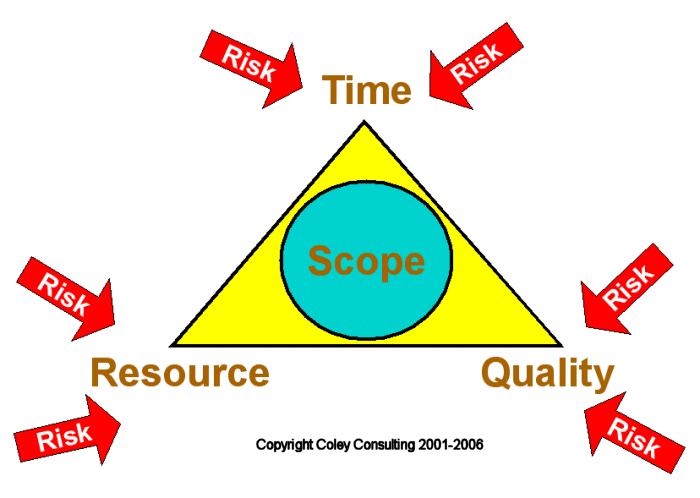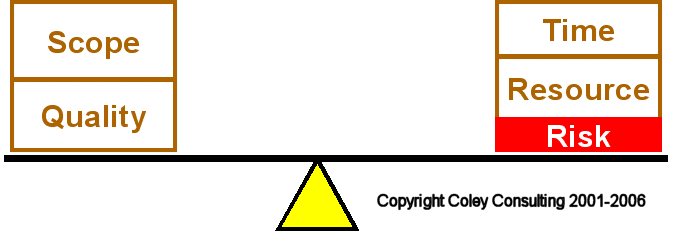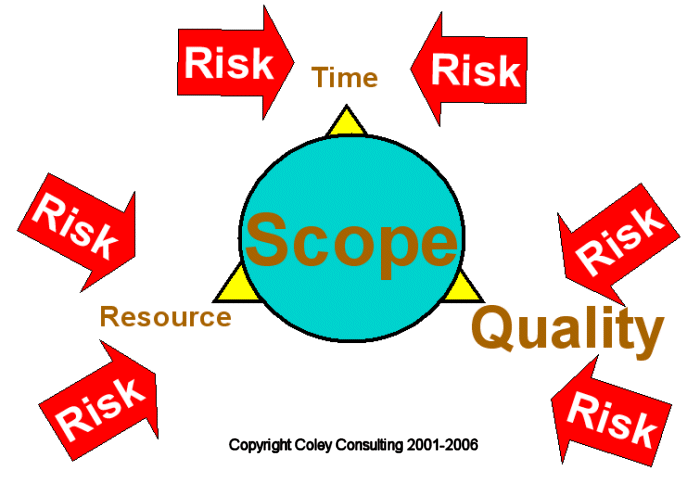Characteristics of Project Plans

A project plan can be considered to have five key characteristics that have to be managed:
- Scope: defines what will be covered in a project.
- Resource: what can be used to meet the scope.
- Time: what tasks are to be undertaken and when.
- Quality: the spread or deviation allowed from a desired standard.
- Risk: defines in advance what may happen to drive the plan off course, and what will be done to recover the situation.
Balanced Plans

The sad thing about plans is you cannot have everything immediately. Many people plan using planning software packages, without realising the tradeoffs that must be made. They assume that if they write a plan down, reality will follow their wishes. Nothing is further from the truth. The point of a plan is to balance:
- The scope, and quality constraint against,
- The time and resource constraint,
- While minimising the risks.
Bad Plan Example

As an example this diagram shows what can happen. The scope is so large that there is no way the time, resource, and quality constraints can result in the project delivering, which means there are enormous risks.
To salvage this plan, requires reducing the scope, increasing the time, or resource, or lowering the quality standard. Any of which will reduce the risk of failure. The key lesson is that plans have to be balanced within the project constraints if they are to deliver.
Test plans are a particular type of project plan and details about how the clauses of IEEE Std 829-1998 for test plans map against these five characteristics is in the Test Plans article.
Project Plan Specifics
- Why Projects Fail outlines the six key issues about why projects fail.
- Project Risk Management outlines with examples the key features in a risk management plan to be included within a project plan.
